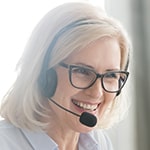Discover 5 simple home adaptations to reduce the risk of falls and enhance safety for elderly individuals, helping you maintain your independence and peace of mind.
Stay Safe at Home: 5 Key Changes to Prevent Falls for Older Adults

Stay Safe at Home: 5 Key Changes to Prevent Falls for Older Adults
It’s normal for mobility to change with age, and alongside that comes an increased risk of falls, which can be worrying not just for you but also for your friends and family.
The good news is that making a few simple changes can have a big impact on reducing the risk of falls and keeping you safe. In this guide, we’ll walk you through five effective modifications that can help you stay comfortable in the home you love.
How common are falls in older adults?
Unfortunately, falls are a common issue as we age. In fact, around one-third of people aged 65 and over, and half of those over 80, experience a fall each year. While some might result in minor scrapes and bruises, others can be much more serious, leading to hospitalisation. In England alone, over 220,000 emergency hospital admissions every year are due to falls in those aged 60 and above.
This demonstrates why fall prevention for seniors is so important. Even a seemingly small trip can have a lasting impact on your health, and the related injuries, like a broken hip, can have a significant knock-on effect on your independence.
Why are older adults more prone to falls at home?
As we move into our senior years, our bodies naturally change, which can make us more vulnerable to falls. Even if you’re generally healthy, your mobility may decrease over time, making you more prone to tripping over or feeling unsteady as you move on your feet. As a result, small obstacles that were once easy to avoid may become much bigger challenges.
Health conditions commonly associated with ageing, such as arthritis, dementia, and Alzheimer’s, can also increase the risk of falls. These conditions can affect your muscle strength, balance, vision, and cognitive function, which are vital for staying confident on your feet. For example, dementia can affect your ability to judge distances, while arthritis might limit your range of motion, making some movements more difficult.
5 essential home adaptations to prevent falls
The thought of falling is understandably worrying, which is one of the reasons why many older adults choose to relocate to a care home. However, there are some surprisingly simple changes you can make to the home you know and love to help you continue ageing in place.
Here are five key adaptations to improve home safety for the elderly:
1. Remove any trip hazards
Changes in mobility can make things that were once easy to navigate, such as a small rug or a low doorframe, become potential trip hazards as you age. Thankfully, identifying and eliminating these hazards is one of the easiest and most effective ways to reduce the risk of falls.
Some common trip hazards to look out for in your home include:
- Loose rugs or mats that can easily move or bunch up
- Cables or wires that trail across walkways
- Uneven doorframes or thresholds
- Clutter or small objects left on the floor
- Slippery surfaces or flooring
- Protruding furniture or corners that are hard to see
Once you’ve carried out your at-home safety recce, it’s time to remove these risks so that you can walk around confidently. Here are some simple ways to reduce these hazards:
- Replace or secure rugs – Replace your rugs with non-slip mats or use double-sided tape to keep existing rugs in place.
- Organise cables – Keep cables secured along walls or behind furniture using cable ties. This will prevent tripping over them in walkways or between rooms.
- Install bright, visible markings – For steps or uneven doorframes, adding reflective or brightly coloured tape will make them easier to spot, even in low light.
- Declutter – Make sure all walkways and hallways are clear of clutter.
- Rearrange furniture – Move furniture to create clear paths, making sure nothing sticks out into walkways or is easy to bump into.
Additionally, if you have pets at home, they can unintentionally become a trip hazard in their own right. Pets, particularly cats and smaller dog breeds, are quick to dart around your legs and can be difficult to spot if they’re quick underfoot.
Here are some helpful tips to avoid tripping over them:
- Keep pet toys and bedding off walkways
- Use a collar with a bell so you can hear your pet coming
- Stay seated when pets are excitable
2. Install a home lift
Falls on the stairs are extremely common for older adults. Around 57,000 people over 60 are admitted to A&E each year because of stair-related accidents, with a shocking 60% of fall-related deaths among older adults being caused by falls on the stairs.
Climbing stairs can become more difficult as we age, which is where a home lift can be a (literal) lifesaver. Installing a lift is a fantastic way to reduce the risk of falls and maintain access to all parts of your home by removing the need to use your stairs entirely.
Plus, a home lift isn’t just for getting you between floors; it’s great for moving heavy things like laundry, shopping, or even a pet from one level to another.
3. Increase lighting in darker areas
While we typically don’t associate poor lighting with falling over, it’s one of the most common causes, contributing to around 30% of falls among older adults. As we experience changes in our vision that come with age, low light conditions can make it harder to spot obstacles or even see where we’re stepping.
To avoid this, make sure all areas of your home are well-lit, especially stairs, hallways, and entryways. Brighten up darker spaces by replacing old bulbs with brighter options with a higher wattage, adding extra lamps in corners, and installing motion-sensor lights in areas like bathrooms and stairways.
4. Fit handrails in key areas
Not every fall can be prevented, even if you’ve made all the suggestions above. The last thing you want is to fall and be unable to call for help, especially if you live alone. That’s where an alarm system can provide peace of mind.
These often involve a wearable device, such as a necklace or bracelet, which you can press if you fall or feel unwell. Once activated, the alarm will alert specified family members, caregivers, or emergency services, making sure that help arrives quickly. Some systems can even detect when a fall has happened automatically, so you don’t have to worry about pressing a button if you’re unable to do so yourself.
5. Invest in an alarm system
Falls aren’t only caused by tripping over obstacles; they can also happen when transitioning between positions, such as standing up from being seated and vice-versa. For older adults, muscle weakness or joint pain can make these movements more challenging and risky.
One of the simplest ways to avoid this type of fall is to install handrails in key areas of your home, such as by your bed, in the bathroom, next to the toilet, and around your bathtub or shower. These provide extra support and stability when moving between standing up and sitting down.
Other ways to reduce the risk of falls
Alongside the adaptations mentioned above, some additional, simple changes can help keep you safe at home.
Here are a few extra tips that can make a difference:
- Wear proper footwear at home – When indoors, opt for well-fitted shoes with non-slip soles. Avoid wearing slippery socks or slippers. Outdoors, make sure your shoes are sturdy and have a solid grip, especially when it’s wet or icy.
- Keep essentials within easy reach – Reaching for items on high shelves or at the bottom of low cupboards can throw off your balance. Store any frequently-used items at waist or eye level so you can avoid unnecessary stretching or bending. And, if you do need to reach higher shelves, investing in a sturdy step stool with a handrail is a much safer option than standing on a chair.
- Stay active – Regular exercise is a great way to maintain your strength, balance, and flexibility. Even something as simple as walking or stretching daily can help slow any changes to your mobility. See our guide to elderly-friendly exercises to discover simple, effective ways to keep fit and healthy.
- Get regular vision and hearing checks – Poor eyesight and hearing loss can make it more difficult to notice obstacles and keep your balance in check. Make sure you’re regularly getting your vision and hearing assessed, and stay on top of keeping your prescription up to date. Also, be careful if you’re using bifocal lenses, as they can sometimes affect your depth perception, especially on stairs.
- Consider multi-generational living – If you live alone, falls can be more dangerous as you risk getting stuck without help. Having a family member around can be a game-changer for fall prevention. With someone nearby, you’re more likely to have assistance with tasks that could lead to falls, and it can be reassuring to know help is on hand if a fall does happen.
Move safely at home with Stiltz
Making simple adaptations to your home can significantly reduce the risk of falls, helping you stay independent and comfortable in your own space.
If you’re looking for a way to move freely between floors, a home lift could be the perfect solution. Explore our range of Stiltz home lifts, including the standard Duo and larger, wheelchair-friendly Trio models, designed to fit seamlessly into your home.
To find out more, contact our friendly team today. Or, for inspiration and advice on ageing in place, take a look at our blog.
Customer Testimonials
My experience with Stiltz Homelifts. Just over a month ago, I had my Stiltz lift installed and I am so pleased with it. The workmen that came and fitted it were very professional and knew what they were doing. They were so professional I would not hesitate to recommend Stiltz lifts to anybody.
Excellent from beginning to end – and beyond.
Everybody we dealt with at Stiltz was very helpful and efficient, from the initial meeting with Nick Sale, the sales rep, thorough technical inspection, the builders, installers, plumber, electrician, and excellent follow up service and attention. My husband’s life is transformed and mine is much easier. Thank you Stiltz.
An excellent company from the first contact to the completed project. All personnel were friendly and very polite but stayed extremely professional throughout. Having been in the construction industry for over 40 years I was aware the preparation work was carried out to a high standard by the best of trades people. The lift itself can not be faulted both the operation and aesthetics.
The service was better than 1st class. It was excellent in every way. We could not be more pleased with everything Stiltz applied it’s self to in any way. We would award 6 stars at the very least.
Suggested Articles
Five Reasons Why Home Lifts Are Better Than Stairlifts
Home lifts are a modern alternative to stairlifts, offering reliability, speed, capacity, and seamless aesthetic integration for a stylish and efficient solution.
How A Disabled Facilities Grant Can Help You Own A Home Lift
Disability Facilities Grants, up to £30,000, can fund home adaptations like Stiltz lifts, supporting independent living for disabled individuals.
What Happens If There Is A Power Cut And I Am In The Home Lift?
Power cuts can be unpredictable. Here’s what you need to know about using your home lift when the lights go out.






